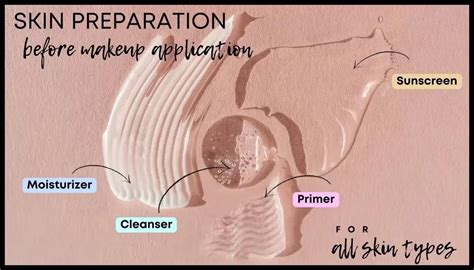Optimize your shave: How to prevent razor burn for peak skin performance?

Razor burn can transform the simple act of shaving from a refreshing routine into a dreaded chore, leaving your skin irritated, red, and covered in bumps. Far from just a cosmetic nuisance, it’s a sign of skin stress that can hinder your confidence and overall skin health. But achieving a consistently smooth, irritation-free shave isn’t just about using the right razor; it’s about a holistic approach that encompasses preparation, technique, and aftercare. This guide will walk you through the proven strategies to prevent razor burn, ensuring your skin performs at its peak, every single day.
Understanding Razor Burn: What It Is and Why It Happens
Razor burn, characterized by redness, stinging, and sometimes small, inflamed bumps, is a common skin irritation that occurs after shaving. It’s often confused with ingrown hairs, but while related, they are distinct. Razor burn is an immediate epidermal response to trauma, whereas ingrown hairs are a deeper issue where hair curls back into the skin. The primary culprits behind razor burn include dull blades, shaving against the grain, inadequate lubrication, dry shaving, and excessive pressure.
When a dull blade drags across the skin, it pulls at the hair rather than cutting it cleanly, causing micro-abrasions. Shaving against the natural direction of hair growth also increases friction and can force hair follicles to become inflamed. Understanding these underlying causes is the first step towards eradicating razor burn from your grooming lexicon.

The Essential Pre-Shave Ritual
A successful shave begins long before the blade touches your skin. Proper preparation is crucial for softening your beard and creating a protective barrier. Start by washing your face with warm water and a gentle cleanser to remove dirt, oil, and dead skin cells. Warm water helps open pores and soften hair follicles, making them easier to cut. For an even closer and less irritating shave, consider a mild exfoliant 1-2 times a week to prevent ingrown hairs and create a smoother surface.
Applying a pre-shave oil is another game-changer. These oils create an extra layer of lubrication, allowing the razor to glide more smoothly and reducing friction. Work the oil into your beard for a minute or two, letting it penetrate and condition the hair before applying your shaving cream or gel.
Master Your Shaving Technique
Technique is paramount in preventing razor burn. First, always use a sharp blade. Dull blades are the leading cause of irritation. Replace your cartridge or safety razor blade every 5-7 shaves, or sooner if you feel any tugging. Apply a rich, hydrating shaving cream or gel that creates a thick lather; this lifts the hairs and provides excellent lubrication. Allow the lather to sit on your face for a minute or two to further soften the beard.
Shave with the grain – in the direction your hair grows – for your first pass. This minimizes tugging and irritation. If you need a closer shave, re-lather and go across the grain (perpendicular to hair growth) for your second pass. Avoid shaving against the grain entirely, especially if you have sensitive skin or are prone to razor burn. Use light, short strokes without applying excessive pressure. Let the weight of the razor do the work.

Post-Shave Care: Soothe and Protect
Once you’ve finished shaving, rinse your face thoroughly with cool water. This helps close pores and remove any residual shaving product and stray hairs. Pat your skin dry with a clean towel; do not rub vigorously. Immediately follow up with a high-quality aftershave balm or moisturizer that is alcohol-free. Alcohol-based aftershaves can strip your skin of natural oils, leading to dryness and irritation.
Look for ingredients like aloe vera, witch hazel, chamomile, and hyaluronic acid, which are known for their soothing, hydrating, and anti-inflammatory properties. Regular moisturizing helps to restore the skin’s natural barrier and keeps it supple, reducing the chances of irritation and ingrown hairs in between shaves.

Tools of the Trade: Choosing the Right Products
Your choice of tools plays a significant role in preventing razor burn. While multi-blade razors offer convenience, they can sometimes cause more irritation due to multiple blades passing over the same spot. A single-blade safety razor or a high-quality cartridge razor with fewer blades might be a better option for those with sensitive skin. Whichever razor you choose, ensure it is clean and sharp.
Invest in a good quality shaving cream or soap. These products offer better cushioning and lubrication than aerosol gels. A badger hair brush or synthetic brush can help create a rich lather, lift hairs, and gently exfoliate the skin, further enhancing your shave experience. Don’t forget to keep all your grooming tools clean and replace them regularly.

Long-Term Strategies for Healthy Skin
Preventing razor burn is an ongoing commitment to your skin’s health. Consistency in your shaving routine and product choices is key. Allow your skin time to adapt to new products or techniques. If you experience persistent irritation, consider extending the time between shaves to give your skin a break, or experiment with different blade types and razor designs.
Furthermore, maintaining overall skin health through a balanced diet, adequate hydration, and sun protection will fortify your skin’s natural defenses, making it more resilient to the stresses of shaving. By embracing these long-term strategies, you’re not just preventing razor burn; you’re cultivating healthy, vibrant skin.
Eliminating razor burn is entirely achievable with the right knowledge and consistent effort. By prioritizing proper preparation, refining your technique, nurturing your skin post-shave, and choosing appropriate tools, you can transform your daily shave from a potential source of irritation into a ritual that leaves your skin feeling smooth, healthy, and performing at its absolute best. Embrace these practices, and say goodbye to razor burn for good.








